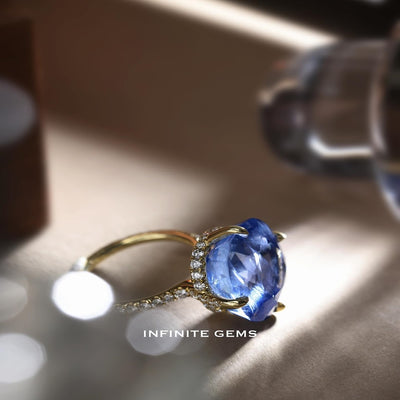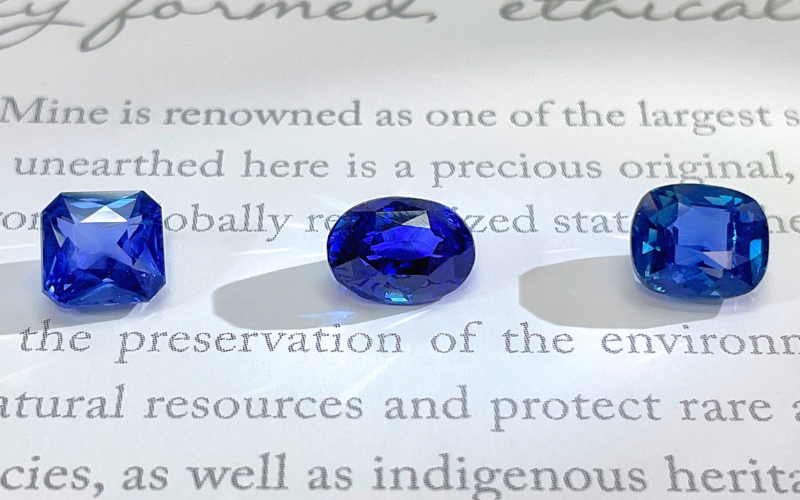Mentioning gemstones, people have various understandings. But strictly speaking, gemstones only include four types: sapphire, ruby, emerald, and diamond. So how well do people actually know sapphires? Today, let's start with color, origin, cutting, and treatment to introduce some basic knowledge to everyone.
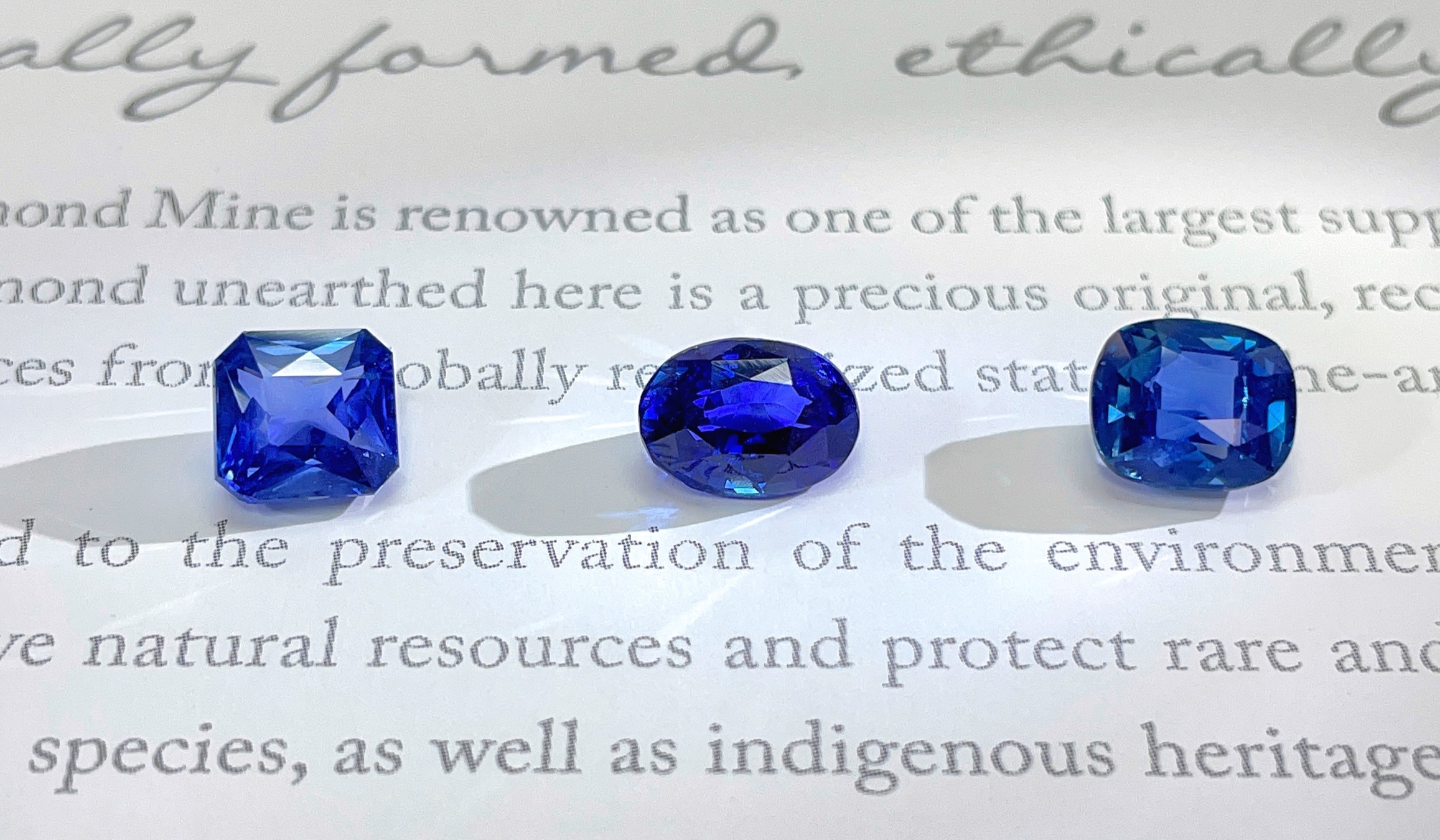
The picture shows our sapphires. On the left-hand side is a 2.09-carat sapphire from Myanmar (Burma), in the middle is a 2.03-carat sapphire from Sri Lanka, and on the right-hand side is a 2.05-carat sapphire from Madagascar.
Color: Sapphires are not necessarily blue?!
Origin: Prices can vary up to 10 times
Shape and Cut: The round brilliant cut is the most common for sapphires
Clarity: Gemstones often have inclusions
Cutting: The brilliance and appearance of a gemstone depend on the cut
Heat Treatment: This is the most common treatment for sapphires
Color: Sapphires are not necessarily blue?!
They are all a type of mineral called corundum. The blue variety is known as blue sapphire, but there is also a red variety called ruby (both ruby and sapphire belong to the corundum family!). Pink sapphires are referred to as pink sapphires, and purple sapphires are called purple sapphires, and so on. However, today's focus is on blue sapphires. How many shades of blue can sapphires have? In the market, they are mostly classified according to the color scale provided by GRS (GemResearch Swisslab). Generally, there are several categories.
Listed here from highest to lowest value:
Royal Blue

Blue

Cornflower Blue
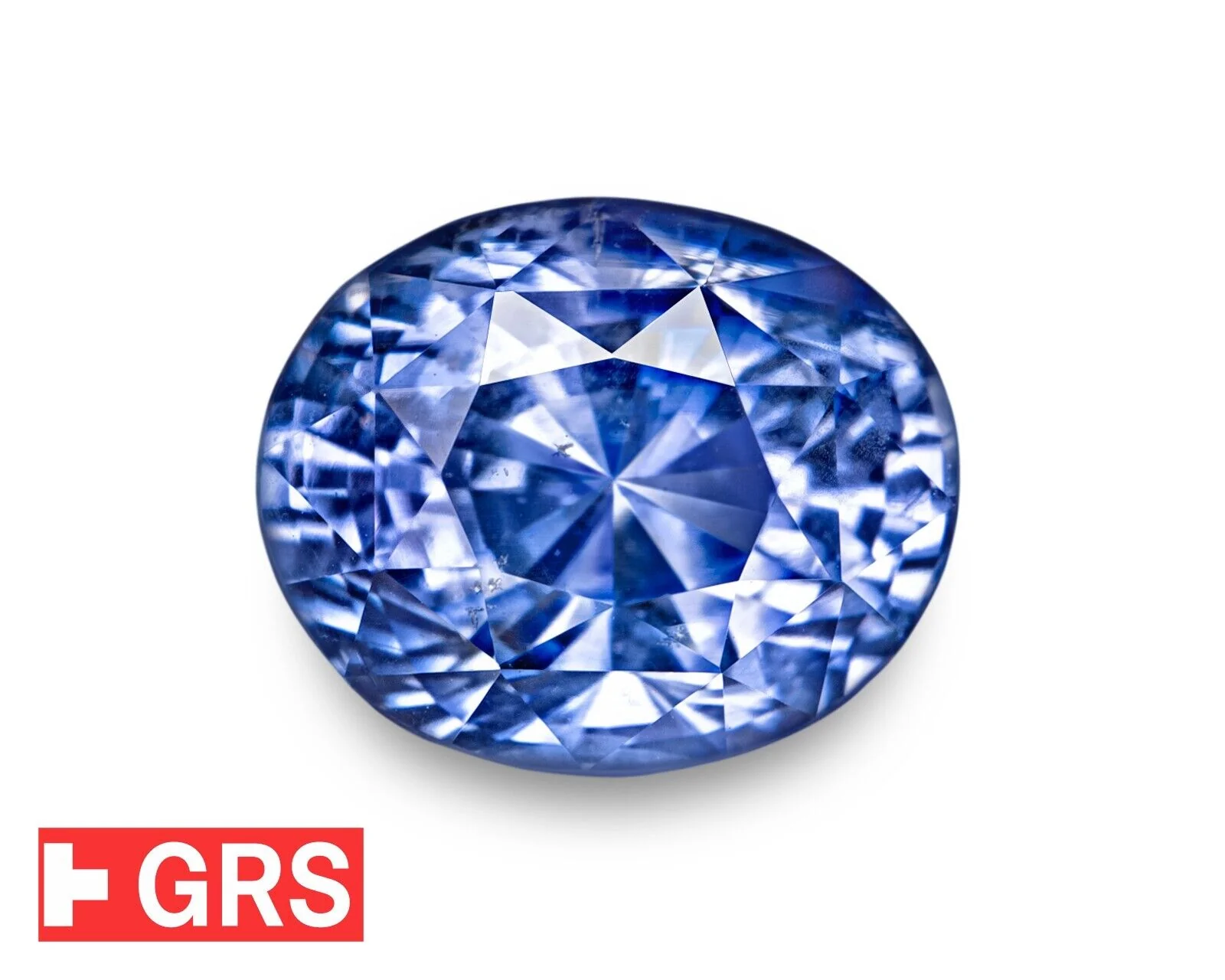
Pastel Blue
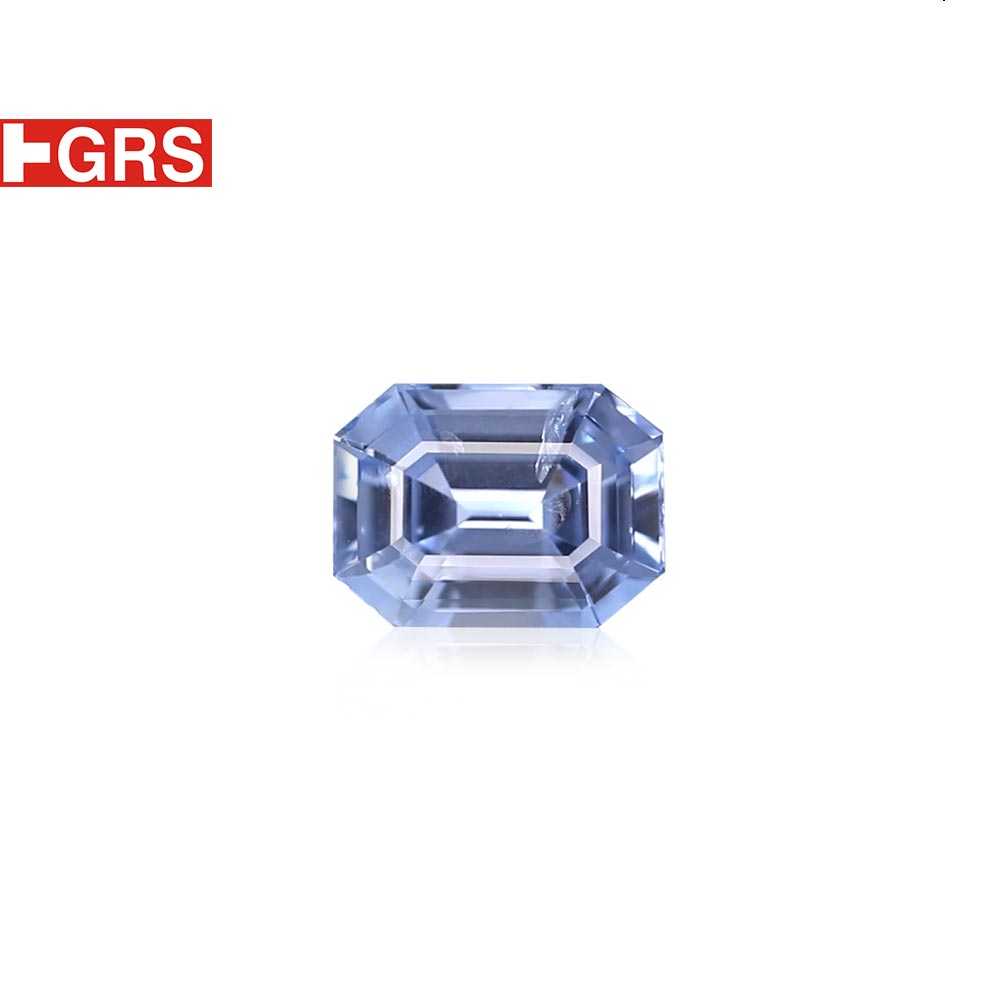
Of course, there are many different color variations, such as Peacock Blue and Indigo Blue, but these colors are not included in the color classifications used by GRS. We will delve into the study of colors in more detail next time.
Origin: Prices can vary up to 10 times
Currently, 70% of sapphires in the market are produced in Sri Lanka (Ceylon) or Madagascar. Other commonly seen origins include Australia, Thailand, and Burma (Myanmar). However, there is one origin of sapphires that surpasses all others in terms of value, and that is Kashmir Sapphire from the Kashmir region. Since the last sapphire mine in Kashmir announced the completion of all sapphire mining in 1887, Kashmir sapphires have become extremely rare in the market. Currently, the value of Kashmir sapphires starts at $11,000 per carat. According to Sotheby's, the most expensive sapphire (per carat) is the Kashmir Sapphire, with a selling price of up to $240,000 per carat.
Here is the ranking of value from highest to lowest:
Kashmir
Burma / Myanmar
Sri Lanka / Ceylon
Madagascar
Australia/ Thailand
Shape and Cut: The least common cut is the round shape and emerald cut
On the other hand, the most common shapes in the market are oval, cushion, pear, and heart shapes. This is because these shapes minimize wastage of the raw material during cutting. The least common cut is the round shape and emerald cut. Mainly because these shapes result in more wastage of the raw material during cutting.
Clarity: Gemstones often have inclusions
Unlike diamonds, gemstones generally have some inclusions, but the degree varies. Gemstones do not have a specific clarity grading system like diamonds, and many gemological institutions use inclusions as one of the indicators of origin. For example, Kashmir sapphires contain numerous tiny inclusions, giving them a velvety appearance, which is one of the distinctive features of Kashmir sapphires. Different people have different preferences, with some appreciating the natural and unique inclusions in gemstones, while others prefer gemstones with no visible inclusions, and the price reflects these preferences.
Weight: The difference between one carat and two carats is not just double but increases exponentially
Larger-carat gemstones are extremely rare because as the weight of the gemstone increases, the requirements for color and clarity become more stringent. So, don't assume that a two-carat gemstone is just twice the price of a one-carat gemstone! Of course, the market offers gemstones at various price points, so it's important to have a clear understanding of the market before making a decision.
Cutting: The brilliance and appearance of gemstones depend on the cut
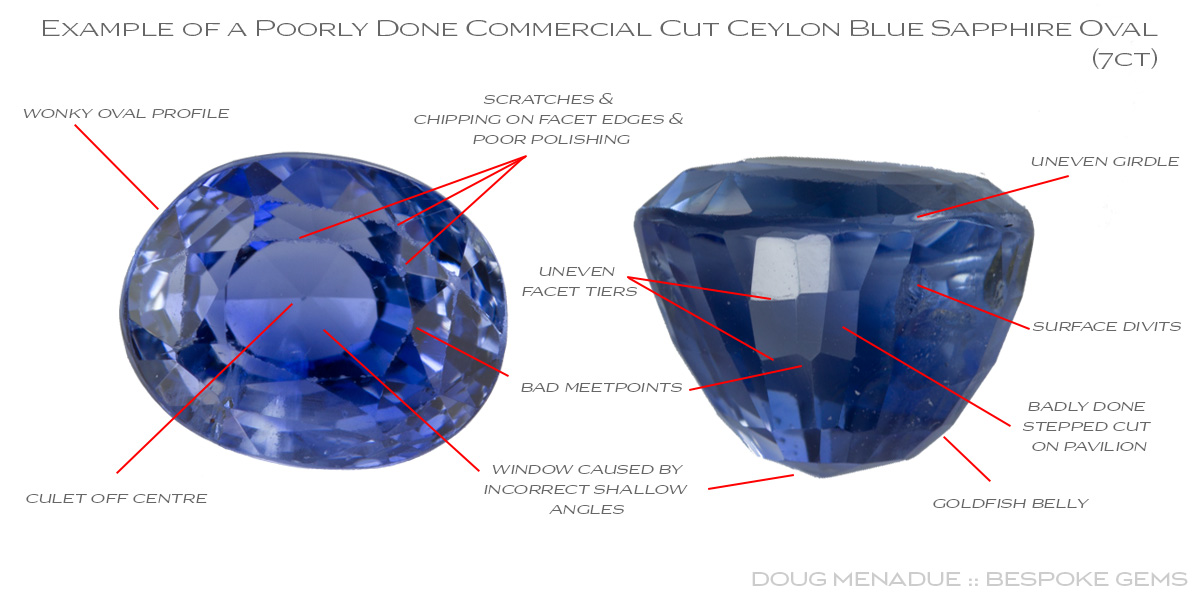
The above images are from Doug Menadue
A gemstone with poor cut not only affects its appearance but also increases its value. This is because a poorly cut gemstone, especially with imbalanced cutting, can make the entire gemstone appear heavier than it actually is, leading people to pay a higher price for a gemstone that appears larger in carat weight. Additionally, if the cut of a gemstone is not good, it can result in a windowing effect, where the gemstone is transparent enough to see through from the surface to the bottom, causing light leakage. Of course, modern designs have various methods to mitigate these issues, but it is still advisable to choose gemstones with good cut.
Star Sapphire Cut: Star sapphire requires special design requirements for its cut to highlight its unique star effect. The following are the characteristics of a star sapphire cut:
-
Star Effect: Star sapphires are usually cut in a round shape with a raised dome at the top of the gemstone, known as a "diamond cut" or "diamond facet." This cut allows light to enter the gemstone and reflect as six-rayed star-shaped rays, creating a unique star effect that enhances the beauty and attractiveness of the gemstone.
-
Large Surface Area: Star sapphires are also known for having a large surface area. Compared to other types of blue sapphires, the cut of star sapphires typically retains more of the original rough stone's weight and creates a gemstone with a larger surface area. This cut enhances the gemstone's sense of value and preciousness, as the larger surface area presents more colors and brilliance.
-
Symmetry: A good star sapphire cut requires excellent symmetry. Symmetry refers to the balance in terms of left-right symmetry, top-bottom symmetry, front-back symmetry, and other aspects of the gemstone. Good symmetry not only makes the gemstone more balanced and visually appealing but also enhances its optical effects and overall luminosity.
Heat Treatment: This is the most common treatment for sapphires
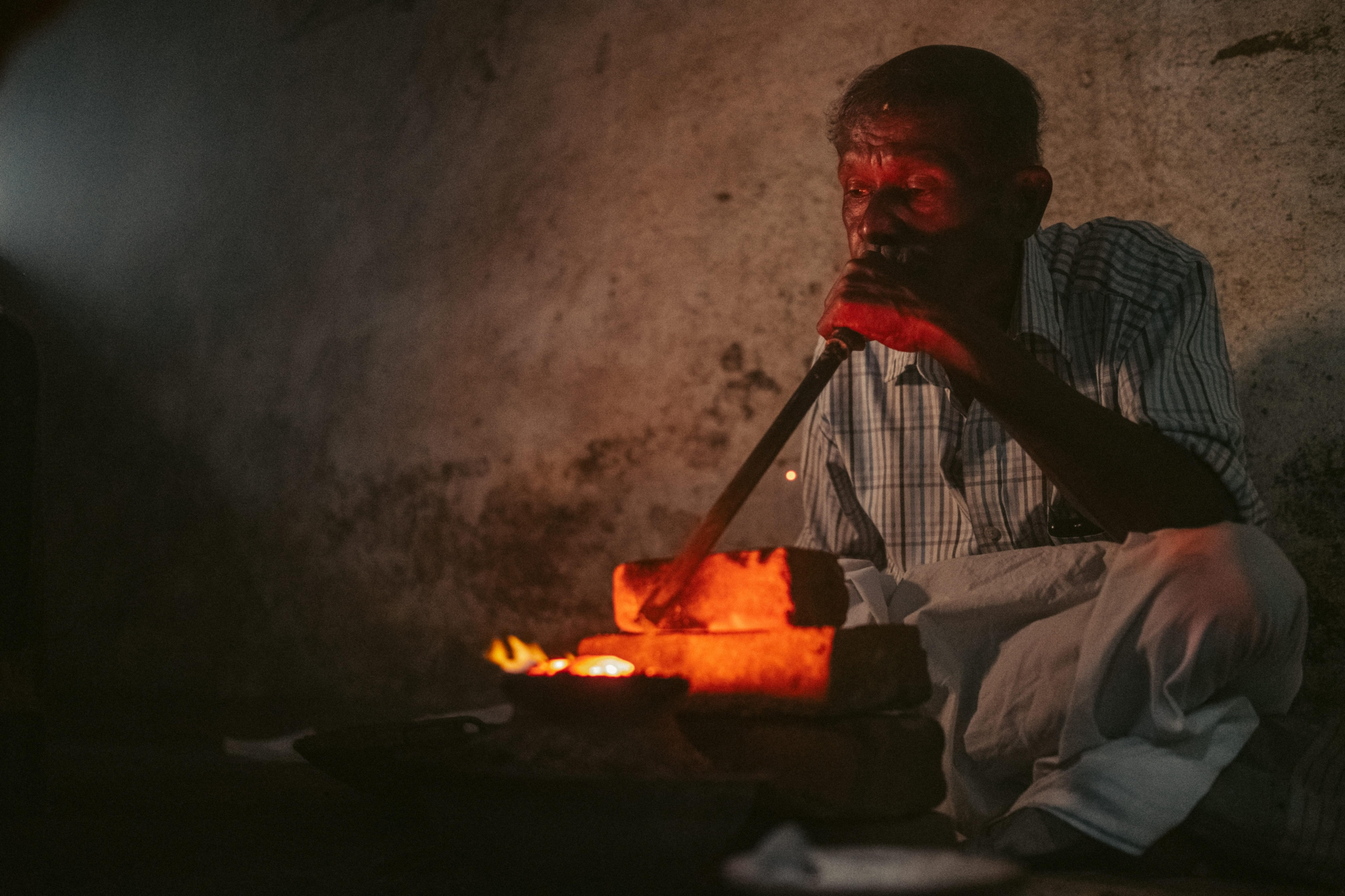
The image shows a master from Sri Lanka heat treating a blue sapphire.
Heat treatment is a common gemstone treatment technique used for blue sapphires. Its purpose is to alter the color and transparency of the sapphire, making it more attractive and valuable. The following is a detailed explanation of the process and effects of heat treatment for blue sapphires:
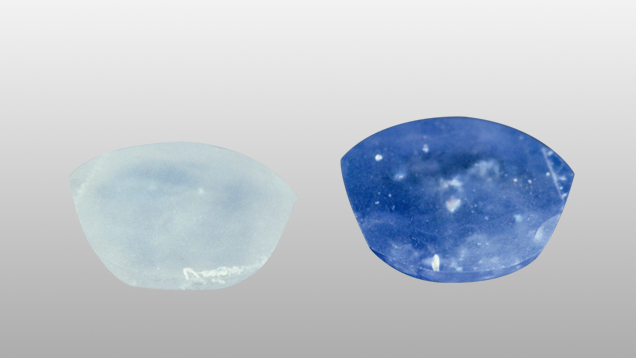
Comparison Before and After Heat Treatment of Blue Sapphire
Effects:
- Color Modification: Heat treatment can modify the color of a blue sapphire, making it more vivid and vibrant. This is because, at high temperatures, the rearrangement of elements like nickel and iron in the sapphire allows for increased light absorption and the creation of a deeper blue hue.
- Transparency Enhancement: Heat treatment of blue sapphire can also improve its transparency, making it more brilliant. During the heating process, small cracks, bubbles, and other impurities in the sapphire are eliminated, resulting in a clearer and more transparent gemstone.
- Increased Value: Due to the alterations in color and transparency achieved through heat treatment, processed blue sapphires are often more valuable than untreated ones. Heat-treated blue sapphires are generally considered more attractive and high-end, thereby increasing their value accordingly. However, it's important to note that, all other quality factors being equal, an untreated blue sapphire will always be more expensive than a treated one, typically with a price difference of at least 50% or more.

